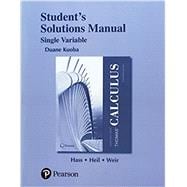Joel Hass received his PhD from the University of California Berkeley. He is currently a professor of mathematics at the University of California Davis. He has coauthored widely used calculus texts as well as calculus study guides. He is currently on the editorial board of several publications, including the Notices of the American Mathematical Society. He has been a member of the Institute for Advanced Study at Princeton University and of the Mathematical Sciences Research Institute, and he was a Sloan Research Fellow. Hass’s current areas of research include the geometry of proteins, three dimensional manifolds, applied math, and computational complexity. In his free time, Hass enjoys kayaking.
Christopher Heil received his PhD from the University of Maryland. He is currently a professor of mathematics at the Georgia Institute of Technology. He is the author of a graduate text on analysis and a number of highly cited research survey articles. He serves on the editorial boards of Applied and Computational Harmonic Analysis and The Journal of Fourier Analysis and Its Applications. Heil's current areas of research include redundant representations, operator theory, and applied harmonic analysis. In his spare time, Heil pursues his hobby of astronomy.
Maurice D. Weir (late) of the the Naval Postgraduate School in Monterey, California was Professor Emeritus as a member of the Department of Applied Mathematics. He held a DA and MS from Carnegie-Mellon University and received his BS at Whitman College. Weir was awarded the Outstanding Civilian Service Medal, the Superior Civilian Service Award, and the Schieffelin Award for Excellence in Teaching. He co-authored eight books, including University Calculus and Thomas’ Calculus.








